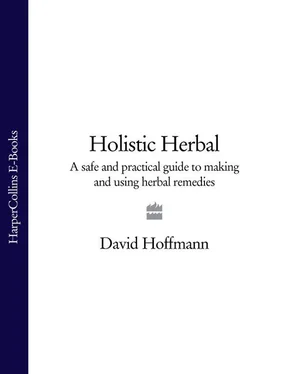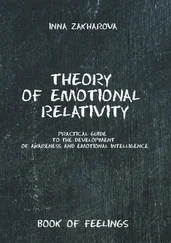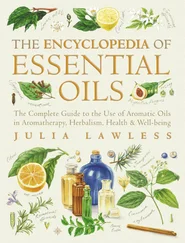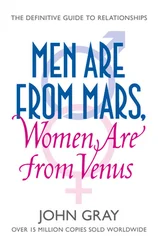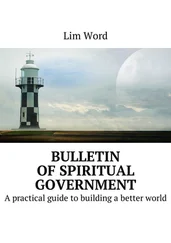The vision of Gaia offers a way in which the consciousness of humanity can resonate with the planetary whole. The vision and purpose of the spiritual drive of humanity can consciously synthesise scientific striving and allow a dynamic interaction between humanity and other realms of nature, within the embrace of the being which is the planet, which is Gaia.
Through the right flow of energies within a system, a body, an ecosystem, comes ecological harmony, comes healing. In this book I wish to share a vision of herbal medicine as a manifestation of Gaia at work, providing that which we need to ensure health and vitality in our physical bodies which in turn allows us greater involvement in the whole. Holistic healing offers an abundance of relevant, valid techniques, something which simply reflects the diversity of human consciousness. There is no need to separate herbal medicine from other holistic forms or even allopathic medicine; they are all valid as agents of healing. This book focuses on herbs as a healing tool, as ecological healers that are gifts from Gaia to humanity.
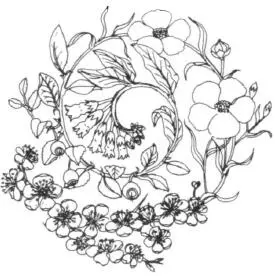
‘He causeth the grass to grow for the cattle, and herbs for the service of man’
Psalm 104:14
Herbs, which comprise much of the realm of plants, are an interface within the body of Gaia. They are an interface between two realms of nature. Where humanity and plants meet, a synergistic energy can be created and exchanged. At such a point inner and outer ecology may resonate and become attuned. We have then an ecologically-integrated process that heals and harmonises the inner environment (the human body) whilst being produced by an outer harmonised environment (nature).
Flowering plants first appeared in geological history during the Cretaceous period, about 135 million years ago. It took them only a very short period of time to diversify into the main flowering plant families we know today. This baffled botanists for a long time until they recognised that the plants evolved within the context of an ecological whole and not as isolated individuals. They evolved within the ecosystem they lived in. The rapid diversification took place through the interaction of plants and insects. The interface between plant and animal realms provided the evolutionary drive.
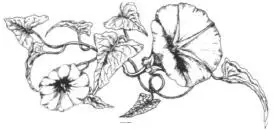
With the concept of Gaia in mind, we can see that evolution is an exercise in cooperation as well as one of competition, both processes forming a web of interactions and producing the complex tapestry of today’s ecology, an interwoven dynamic system. The ecosystem can only be understood as a whole—as one integrated and self-maintaining unit. All that is needed for the maintenance of any part of the whole is supplied by it; in fact has to be supplied by the system, since there is nothing outside it. If the system did not take care of itself, it would not be viable and could not survive.
A specific example is the phenomenon of secondary plant products. A number of plants produce a range of complex chemicals that play no identifiable role within the metabolism of that plant; we call them secondary plant products. The only way to explain their function within the individual plant scientifically is to assume that it is a very complex way of isolating waste matter accumulated from the metabolic process of the plant, and this would be totally out of keeping with the genius of the realm of plants for efficiency and design.
Secondary plant products such as the alkaloids, the glycosides and many other groups have a strong and marked influence on human and animal physiology. They are the agents that distinguish herbs from other plants, as pharmaceutical chemists are finding out. This is not merely a fortuitous accident. It is in fact the hallmark of Gaia. By eating plants we are linked to a circulatory system within the biosphere and to the energy source of the sun, since plants synthesise their own nutrition via sunlight. The secondary plant products are taking part in this circulation to reach us and to facilitate homeostasis. In a profound and ingenious way, our food can be our healing.
The realm of plants provides everything our body needs for a balanced and integrated existence. However, we are more than just a body; we also have consciousness, which brings other factors onto the stage. We not only have to take our animal body into consideration, but also our emotions, our mind and our spiritual nature. Harmony is no longer simply a matter of right diet or even right herbs, but also a matter of right feelings, right thoughts, lifestyle, attunement, actions—harmony of right relationship to our world and ourselves. Choice comes into the healing process when we see which of these areas we need to work with most.
It is impossible to generalise about the relative value of techniques that work with the physical body, with the emotions or spiritual energies. All have their role and can work together for healing to take place. It can be said that health lies in correct diet, or right use of allopathic drugs, or a free flow of soul energy. All these statements are correct and all of them are relative.
Where does herbal medicine fit into this picture? By the nature of the plant form, herbs work on the physical body. They are acting to integrate and balance its physiological function and to augment its innate vitality. When the body is balanced, the process of integrating the other aspects of our being is helped and catalysed. Whilst herbs will not replace relevant techniques like counselling or meditation, they will help the chalice of the body to be strong, receptive and supportive of the subtler aspects of human life.
Ecosystems and the biosphere
Every culture throughout the world—until very recently—used healing plants as the basis for their medicine. The therapeutic philosophy and rationale for plant use varies, but for thousands of years plants have demonstrated their efficiency and significance.
Each culture had a basic healing flora from which remedies were selected. This range of plants would vary from area to area depending on the local ecosystem. It is remarkable, however, to look at Wales, Southern India, the North American plains or any other area and find herbs with equivalent actions. The plant species, or even the botanical types might be totally different, but the range of human problems that can be dealt with botanically is the same. Whilst this supports the idea of Gaia providing a context for healing with the aid of herbs, it raises the question of whether today we should always stick to the flora provided by the local ecosystem within which we live.
The ecosystem available to us is no longer a local one, just as our human culture and consciousness is no longer a local one. We have become planetary beings, though not necessarily yet out of our own choice. Our food may come from anywhere in the world and modern information technology brings the world into our homes, opening our thoughts and emotional lives to a wide range of influences. We are already in many ways planetary citizens. As planetary beings within the body of Gaia, the whole of the world’s flora is available to us and rightly so.
We also have to consider human impact on local ecosystems. In Wales, for example, it used to be possible to obtain a large range of plants in natural habitats. Nowadays, due to intensive agriculture, to deforestation and reafforestation with foreign conifers, and the expansion and industrialisation of towns, there are few truly natural and wild habitats left; the range of plants available to us locally is therefore greatly reduced. This has been part of the ecological impact of humanity, unaware as it has been of whole systems and the value of their interrelationships.
Читать дальше
